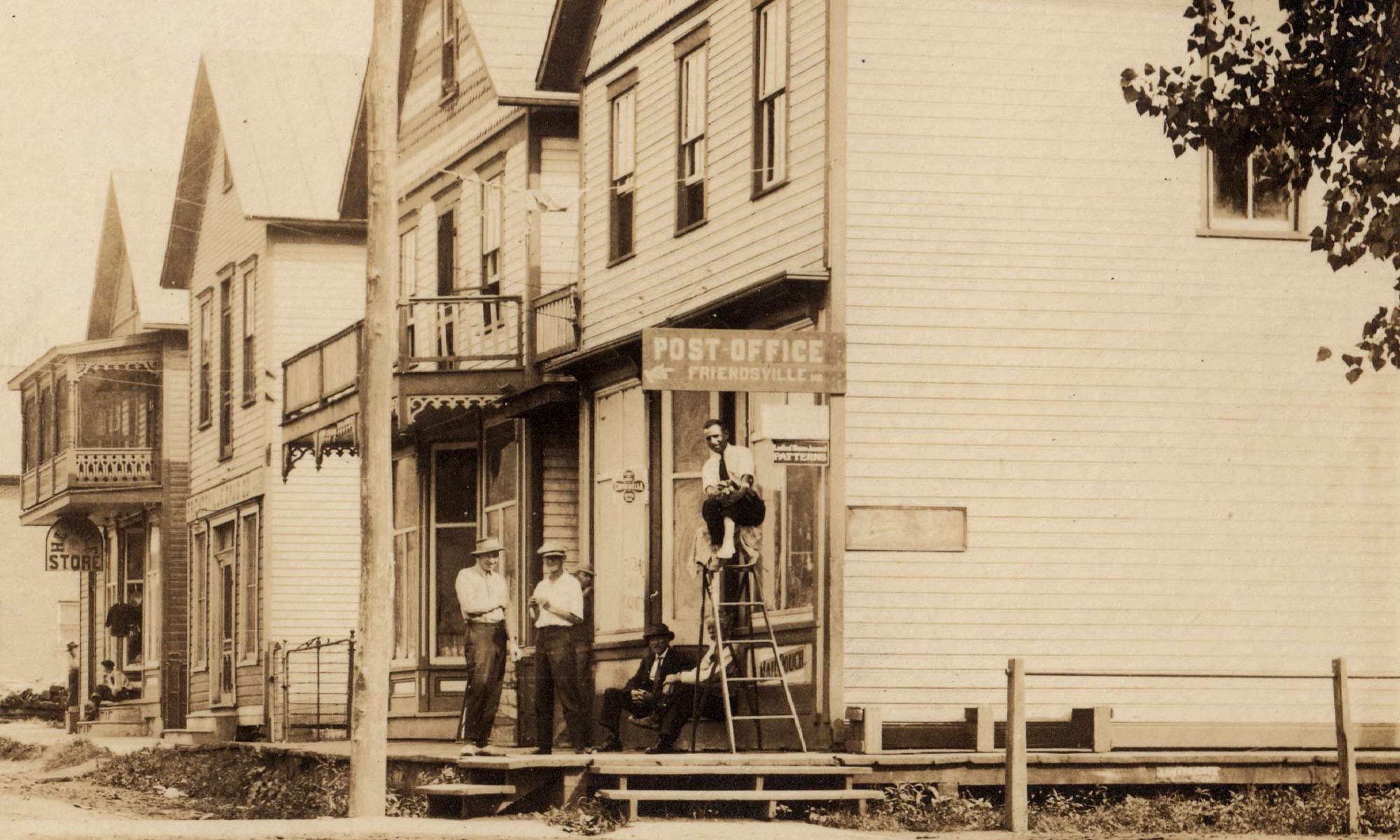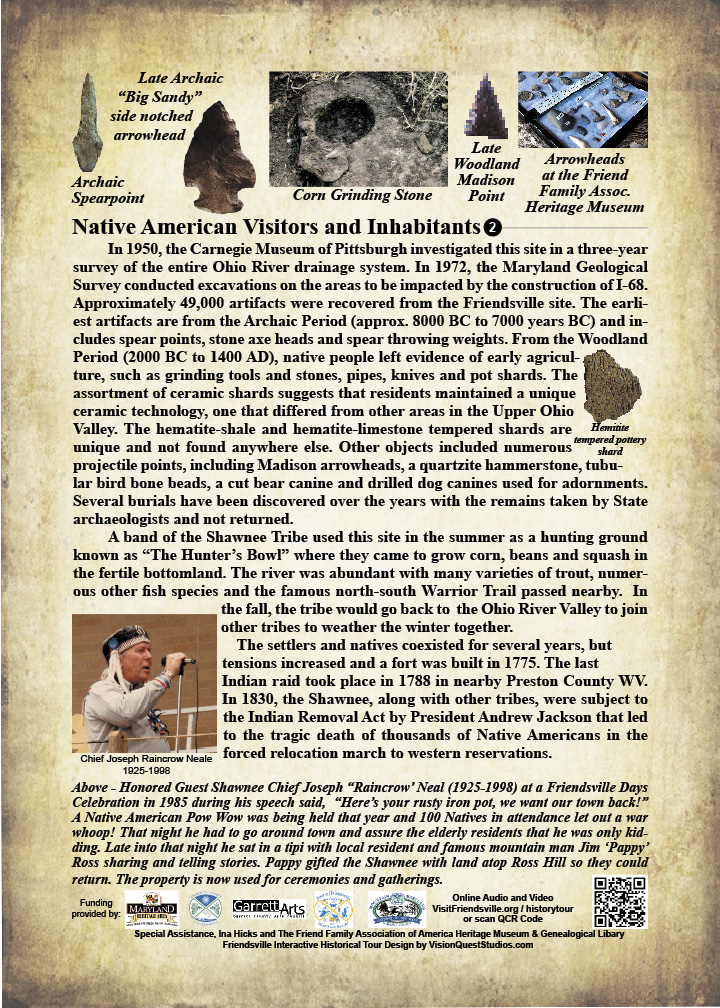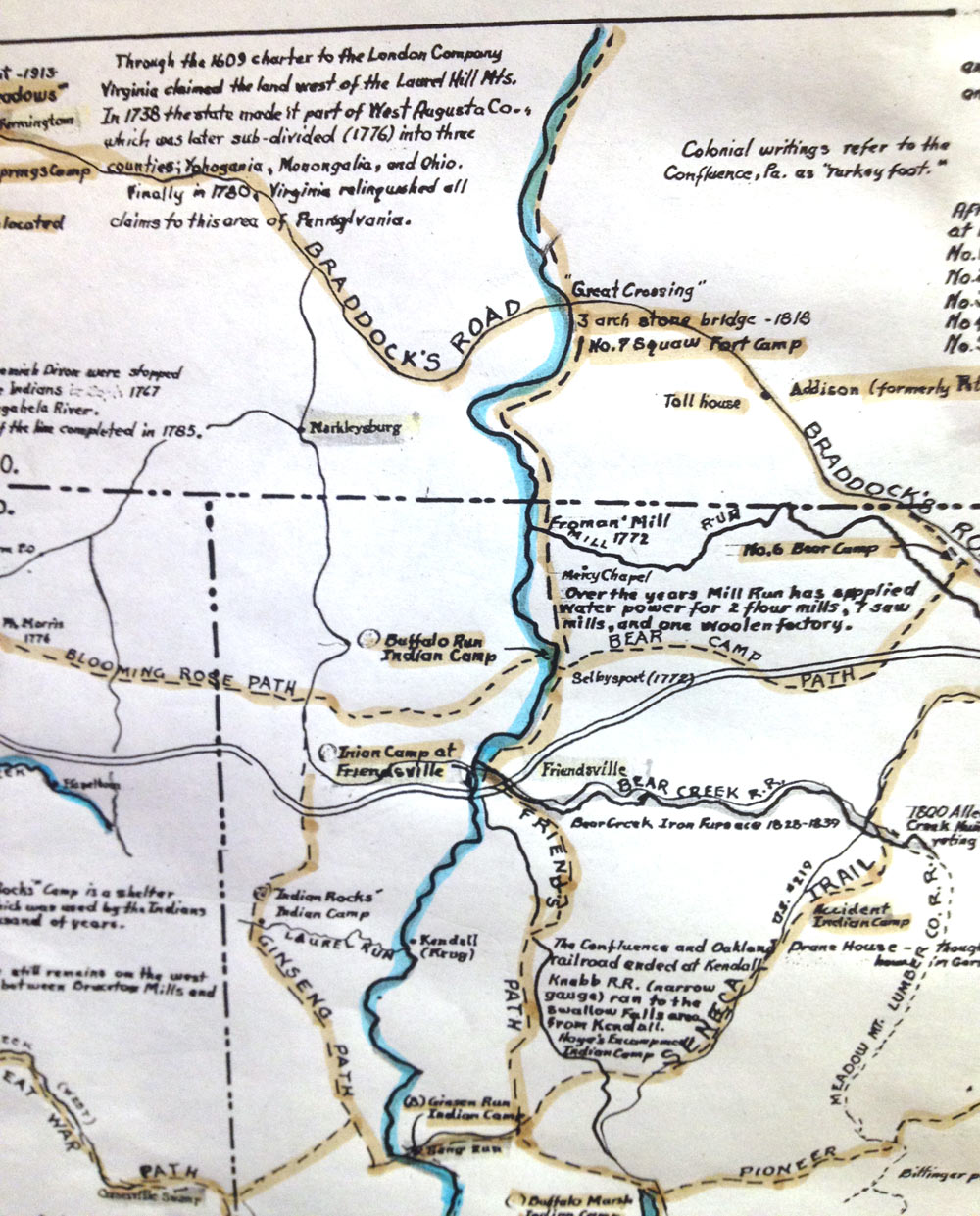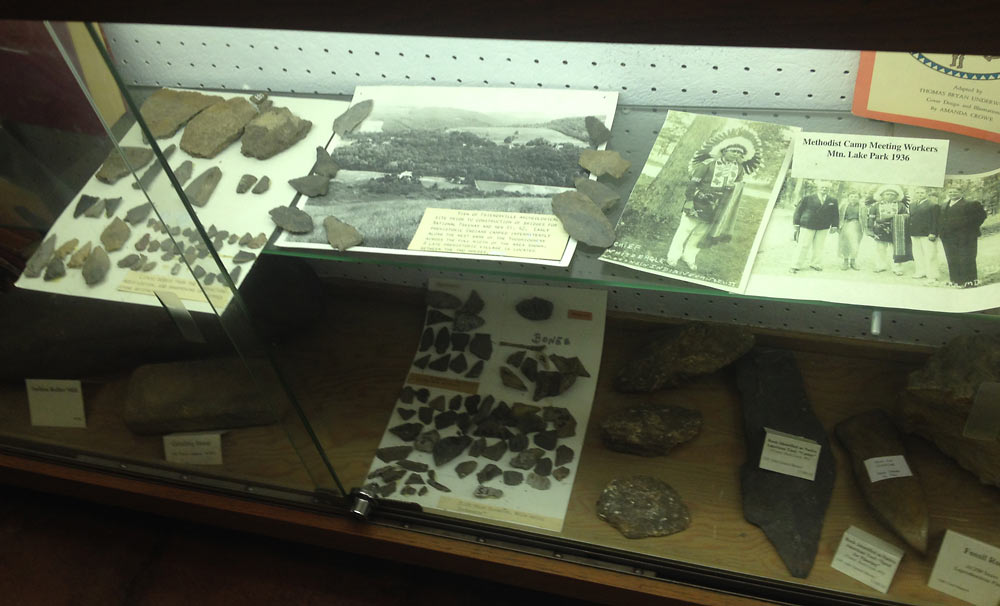Marker Text
In 1950, the Carnegie Museum of Pittsburgh investigated this site in a three-year survey of the entire Ohio River drainage system. In 1972, the Maryland Geological Survey conducted excavations on the areas to be impacted by the construction of I-68. Approximately 49,000 artifacts were recovered from the Friendsville site. The earliest artifacts are from the Archaic Period (approx. 8000 BC to 7000 years BC) and includes spear points, stone axe heads and spear throwing weights. From the Woodland Period (2000 BC to 1400 AD), native people left evidence of early agriculture, such as grinding tools and stones, pipes, knives and pot shards. The assortment of ceramic shards suggests that residents maintained a unique ceramic technology, one that differed from other areas in the Upper Ohio Valley. The hematite-shale and hematite-limestone tempered shards are unique and not found anywhere else. Other objects included numerous projectile points, including Madison arrowheads, a quartzite hammerstone, tubular bird bone beads, a cut bear canine and drilled dog canines used for adornments. Several burials have been discovered over the years with the remains taken by State archaeologists and not returned.
A band of the Shawnee Tribe used this site in the summer as a hunting ground known as “The Hunter’s Bowl” where they came to grow corn, beans and squash in the fertile bottomland. The river was abundant with many varieties of trout, numerous other fish species and the famous north-south Warrior Trail passed nearby. In the fall, the tribe would go back to the Ohio River Valley to join other tribes to weather the winter together.
The settlers and natives coexisted for several years, but tensions increased and a fort was built in 1775. The last Indian raid took place in 1788 in nearby Preston County WV. In 1830, the Shawnee, along with other tribes, were subject to the Indian Removal Act by President Andrew Jackson that led to the tragic death of thousands of Native Americans in the forced relocation march to western reservations.
Above – Honored Guest Shawnee Chief Joseph “Raincrow’ Neal (1925-2002) at Friendsville Days Celebration in 1985 during his speech said, “Here’s your rusty iron pot back, we want our town back!” A Native American Pow Wow was participating that year and 100 Natives in attendance let out a war whoop! That night he had to go around town and assure the elderly residents that he was only kidding. Late into that night he sat in a tipi with local resident and famous mountain man Jim ‘Pappy’ Ross sharing and telling stories. Pappy gifted the Shawnee land atop Ross Hill so they could return. The private property is now used for ceremonies and gathering. grounds.
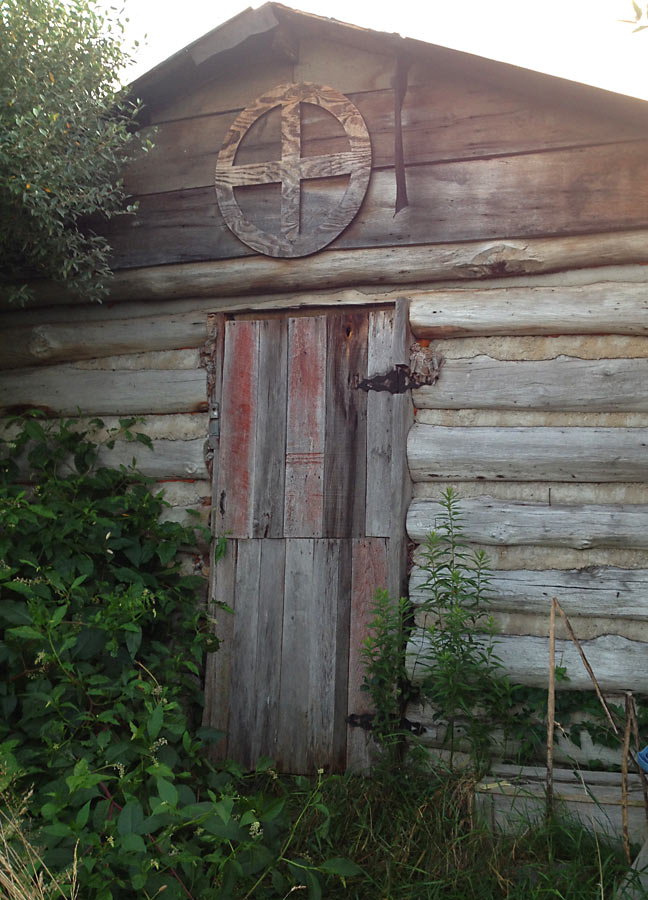
Another story about the Shawnee and Friendsville:
When the Friend Family came here there is a legendary story told by Mr. George Kolb that the settlers were treated to a Green Corn Dance. This dance of gratitude for the maize, sustainer of life was reminiscent of the Thanksgiving Feast of 1621 in Plymouth. “The reception John, Gabriel and Andrew Friend had here contained the essence of Native culture, the best the Native could give. The Green Corn Dance, performed below the Canyon’s leafy curtain was something for Gabe’s grandchildren to tell and cause the little mountain bowl to be blessed with a sacred memory.’ From Indian Blood, Evelyn Guard Olsen.
Learn More About The Woodlands Tribes at The Smithsonian
National Museum of the American Indian
Jefferson Patterson Museum, Calvert County, Maryland
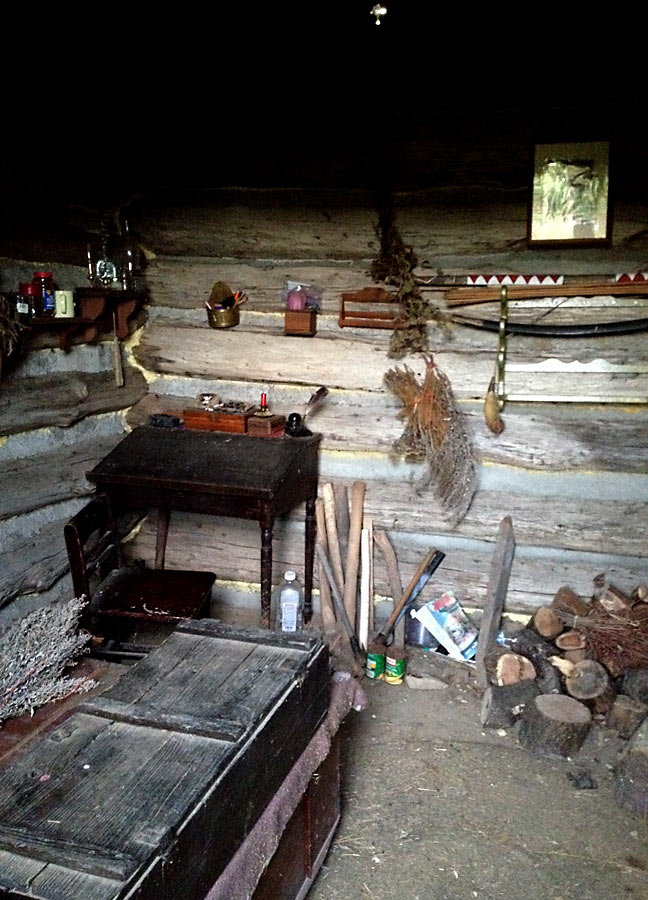
Indian Trail Map.
Available at the Garrett County Historical Society Museum
Native American Display, Garrett County Historical Museum, Oakland, Maryland.
